Asian cuisine is exciting, delicious, and full of flavor, and exotic Asian fruits and vegetables are a big part of what makes Asian food so unique. Wandering through the local markets is a wonderful way to get to know a new destination. If your travels take you to any of the 48 countries of Asia, try some of these Asian fruits – their vibrant colors, spiky skins, tastes, and textures are so glorious and often unexpected.
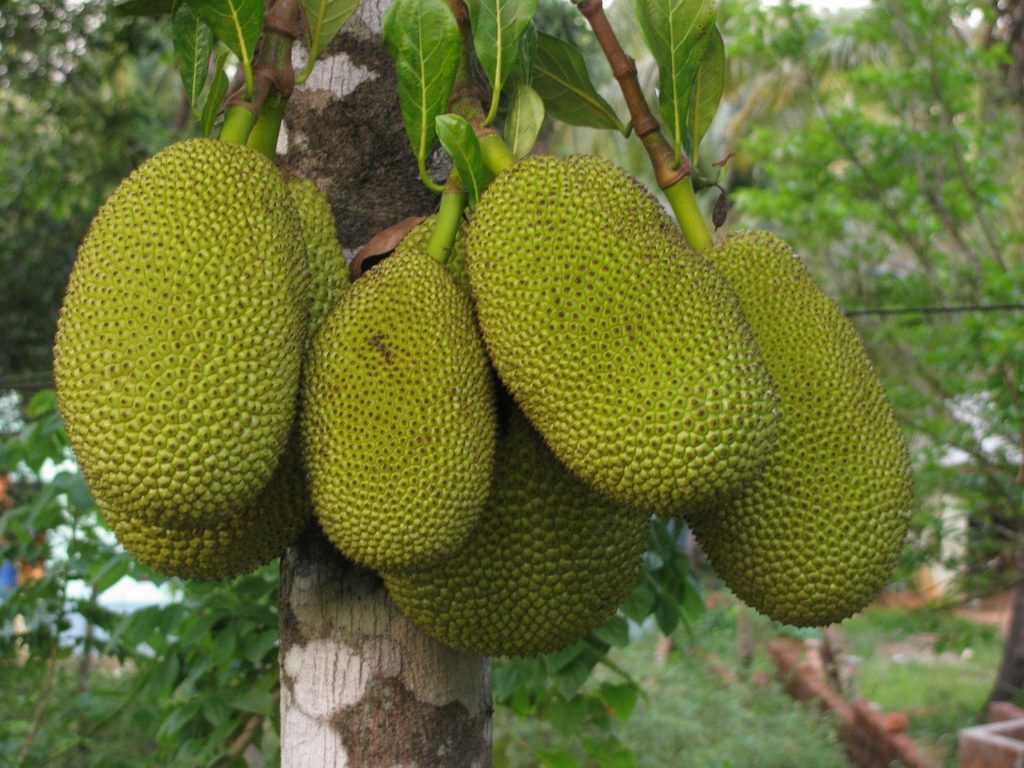
Trying new foods is one of the best things you can do when visiting Asia. With so many street vendors and food markets, exotic new dishes, fruits, and vegetables are so easy to find – all you have to do is have an open mind. If you can’t get to Asia just yet, visit an Asian Grocery Store near you to explore a few “new to you” Asian fruits.
I didn’t include more readily available coconuts, pomegranates, and papaya in this list of rare, unique, and exotic fruits from Asia and the tropics. Use this handy guide to learn about the different types of Asian fruits and try a few on your next trip to Asia.
Asian fruits come in a dazzling array of flavors that refresh, soothe, and sometimes even surprise. Get out of your comfort zone, try a few of these exotic Asian fruits. Let’s start with a few exotic, rare fruits available in India — fruits that I grew up eating, and the ones that bring back so many fond memories.
WHAT IS IN THIS POST
1. Jackfruit
Relatively an unknown fruit in the West. Jackfruit is a common sight throughout Asia, especially in the Indian Subcontinent. Jackfruit is also the national fruit of Bangladesh. Jackfruit is the largest tree-borne fruit on earth and is the king of fruits.
My husband’s grandmother’s home in Kerala had trees that were filled with these huge oblong green fruits of different sizes. They were called ‘jaca‘ which is derived from the Portuguese word ‘jaca’. Growing up, when our family brought home one of the huge spiky fruit, the whole house will be enveloped in the sweet smell. It tastes like a combination of apple, pineapple, and banana.
How do you know when a Jackfruit is ripe?
It takes some expertise and experience to know when jackfruit is ripe. Its exterior will need to have a little bit of give in it and it would have turned from green to yellow with brown spots. You will notice the sweet smell. Knock on the spiky skin, and it will also sound a little bit hollow.
It is a tedious chore to cut the jackfruit to get the sweet yellow lobes out but boy are they delicious. Almost like honey when ripe! When too ripe, they can get stringy. Jackfruit is sort of a finicky exotic Asian fruit!
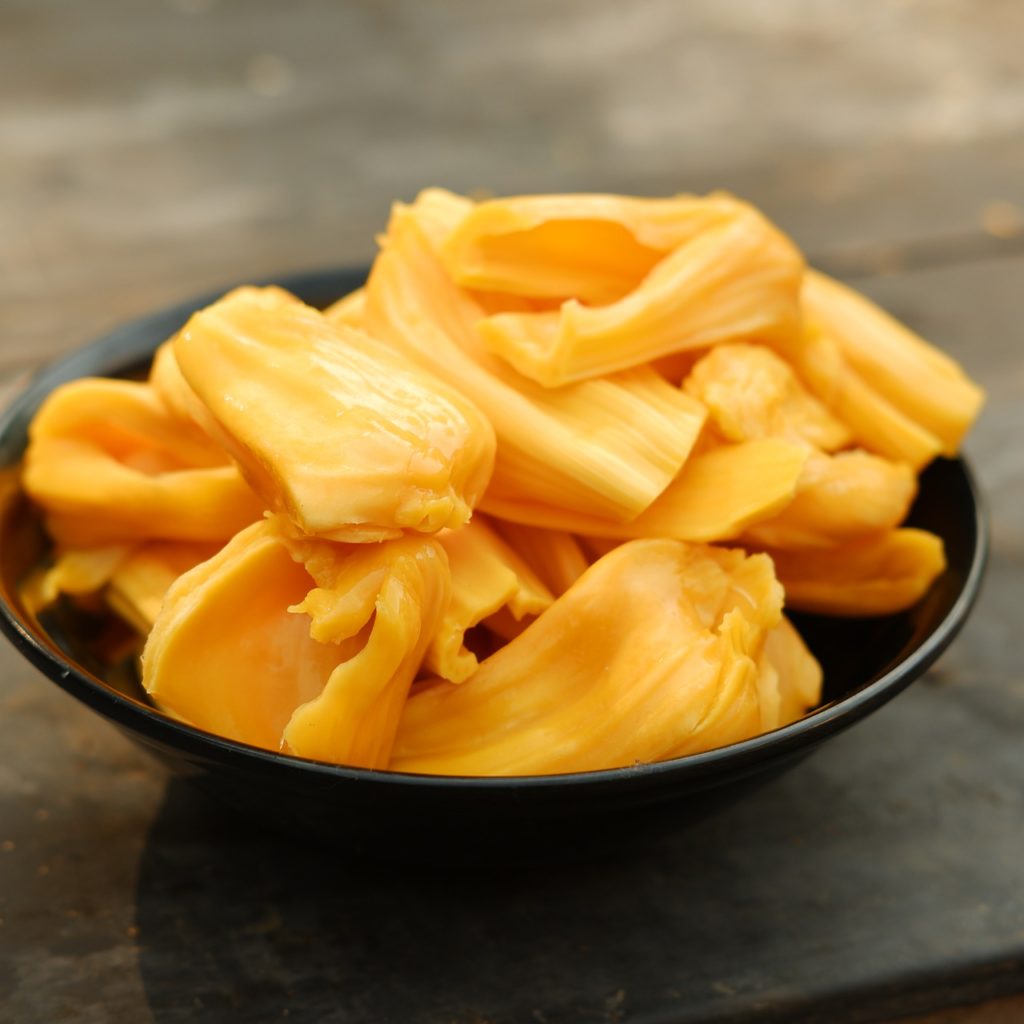
How to cut a Jackfruit?
Jackfruit contains sap that is like natural latex, so if you have a latex allergy, wear gloves. If working bare-handed to cut a jackfruit, slather oil over your hands and use a sharp serrated knife to slice through the thick skin. Take extra caution when doing so and work carefully so the knife doesn’t slip.
Jackfruit seeds (nuts) can be roasted like chestnuts, or boiled. When cooked inside the jackfruit nut softens and can easily be eaten. Jackfruit is rich in several types of antioxidants, has fiber and many vitamins, and has a low glycemic index.
You can find jackfruit in many Asian markets and specialty stores. Green jackfruit is used as an excellent vegetarian substitute for chicken or duck. Makes an excellent pulled pork substitute.
2. Guava
Guava is another one of my favorite Asian fruits – soft flesh in tones of pink, red, or white, they are delicious. They bring back memories of childhood when we used to pluck them out of the trees in my uncle’s house in Chennai. Watermelon guava with pink flesh is my favorite, it tastes like strawberry and melon.
The sweet aromatic flesh of guava tastes like a cross between a pear and a strawberry. It can be used in smoothies, juices, fruit desserts, but I like to enjoy them as is, cut into slices. Guava can be eaten skin-on, just like an apple. You can find guava fruit across most of Asia.
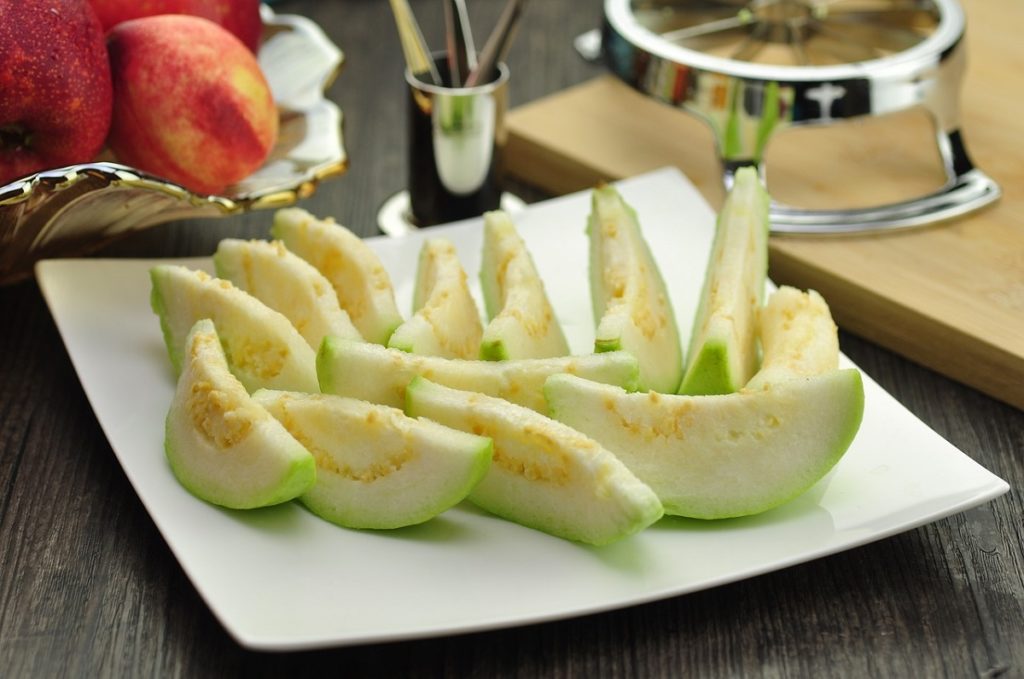
3. Mango
Mangoes signal the arrival of summer! When the temperatures start to soar, you see the different varieties on offers at the street vendors. You might think Mangoes are not exotic fruits but there are so many varieties. While you probably have come across Honey (Ataulfo) or Haden Mangoes that are mainly cultivated in Mexico, Peru, or Ecuador. The Indian Subcontinent is home to hundred different varieties of Mangoes.
Alphonso mangoes, from the Maharashtra state of India, is considered the number one in taste and flavor. Banganpalli (Safeda) is another favorite. It usually hits the market first in the season. This mango variety belongs to Andhra Pradesh state in India and offers an unmistakable sweet taste! Neelam mangoes are available throughout the season. The tastiest ones come in the month of June when monsoons occur.
Nam Dok Mai mango has a sweet fragrance and tastes quite good with its juicy flesh. It is one of the most popular mango varieties in Thailand. Khieo Sawoei Sampran is one of the most expensive mangoes in Thailand and is usually available in October. Mamuang Ok Rong is the most popular mango in Thailand and is served with Thai food like sticky rice.
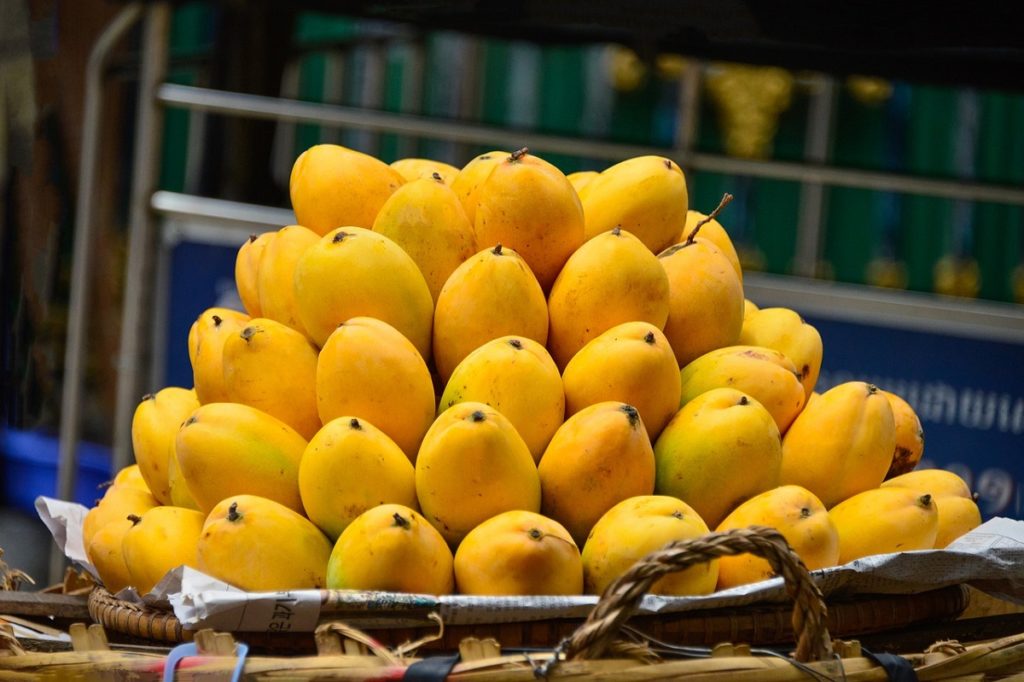
Best way to cut a mango?
The best way to cut a mango is to cut them into 3 parts. Hold the mango firmly, stem end up, cut slightly off center on either side of the stone. Score the two fleshy parts into cubes. Now scoop out the mango cubes with a large spoon.
Ripe mangoes range in color from greenish to yellow to red, and you may see all three colors on the same piece of fruit. Unripe mangoes will ripen in a few days on the counter. You can refrigerate ripe mangoes to make them last longer. I love adding them to my green smoothies.
4. Sapodilla or Chickoo
The soft, delicious flesh can be tones of pink, red, or orange, depending on the type. Inside, the sweet aromatic flesh of sapodilla tastes and feels like a cross between a pear and a strawberry. It is another one of my favorite fruits from India that I miss. I only get to eat the frozen ones these days!
Used in smoothies, juices, fruit desserts, and even as decoration, you’ll commonly see this fruit across Asia. It is also called Sapota and belongs to the Sapotaceae family that goes with the scientific name Manilkara zapota.
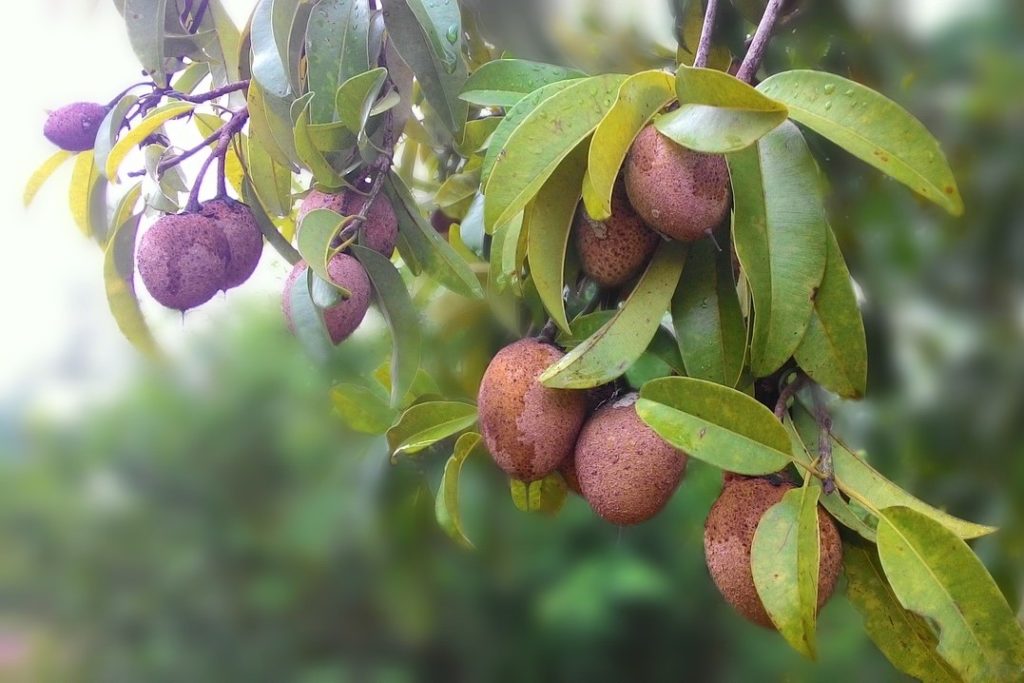
5. Mosambi or Sweet Lime
Mosambi is also called sweet lime or sathukudi fruit in Tamil. … Sweet lime or lemon is an ancient Indian fruit while the orange is a hybrid that was created out of the pomelo and mandarin fruits. There is lots of speculation among people regarding. orange vs mosambi, as to which is best. My vote goes to Mosambi!
Benefits of sweet lime or mosambi?
Mosambi juice is very popular in India and Pakistan and is not acidic inspite of belonging to the citrus family. Mosambi juice provides a significant amount of calcium, which is beneficial for the growth of the developing fetus. The limonoids present in sweet limes help in fighting different types of cancer.
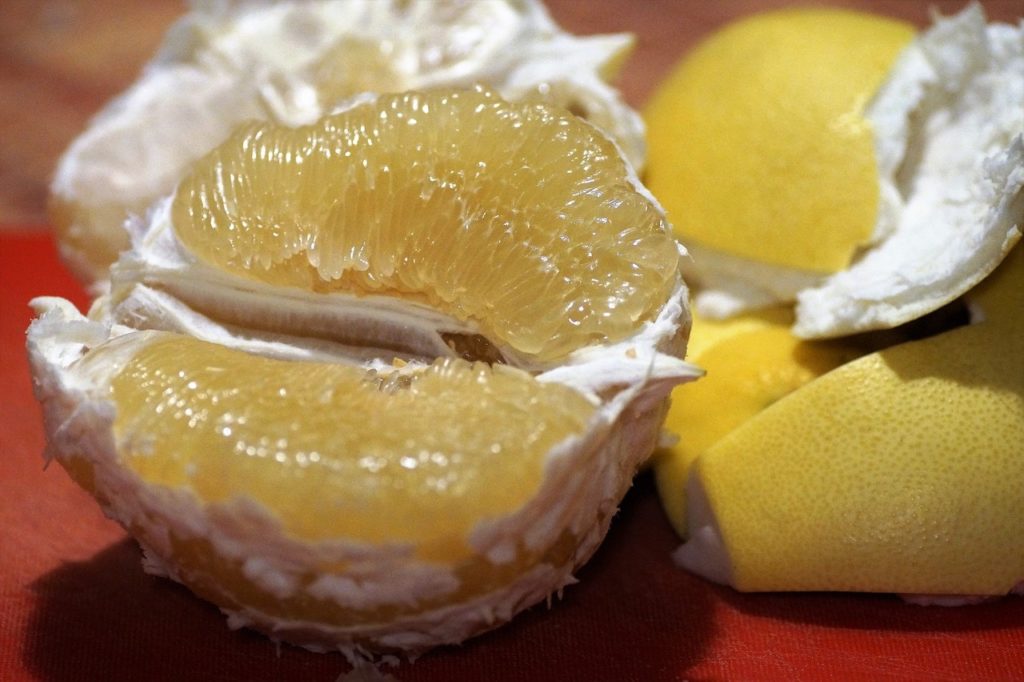
6. Starfruit or Carambola
This star-shaped fruit with waxy skin makes a great preserve or pickle rather than just eaten raw. While the unripe ones are green in color and sour to taste, the ripened ones are distinctly yellow in color with slightly brown ribs and have a sweet taste.
The fruit is grown throughout India, especially in the Southern parts and also found in many Asian countries. This uniquely shaped juicy tropical fruit can be found in Thailand and throughout Southeast Asia, Australia, South America, but also in Hawaii and Florida. They are sometimes easy to find at your local grocery store or market, especially in winter.
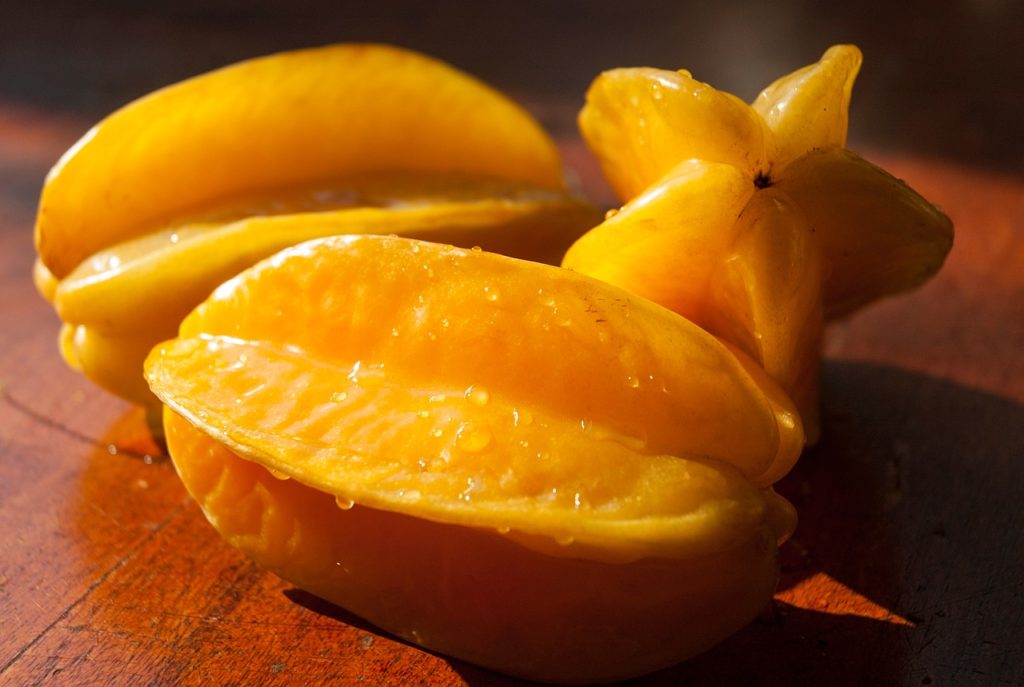
How to cut and eat a Starfruit?
Simply cut off the ends, and the dark tip along each ridge, slice it, remove the seeds and enjoy. It is also excellent juiced and is delicious combined with pear juice. Starfruit makes a beautiful garnish for salads and other dishes as well as for cocktails.
Starfruit or Carambola is rich in antioxidants, potassium, and vitamin C and low in sugar, sodium and acid.
7. Lychee
Sometimes spelled litchi or even called alligator strawberry, Lychee is a fruit that is native to China but is grown in some parts of the United States. Legend has it that the last Emperor of the Tang Dynasty had his guards travel over 600 miles across China to bring fresh lychees to the palace in an attempt to woo his beloved. Lychees have even been considered as a symbol of love since then and one of the popular Asian fruits.
Lychee fruit doesn’t ripen after it’s picked and it also begins to ferment soon. So it’s essential that you choose only the freshest fruit and use it within a few days. Lychee is typically in season from late spring through early fall. But this delicious tropical fruit that can be usually be found year-round, in cans or in the form of jellies.
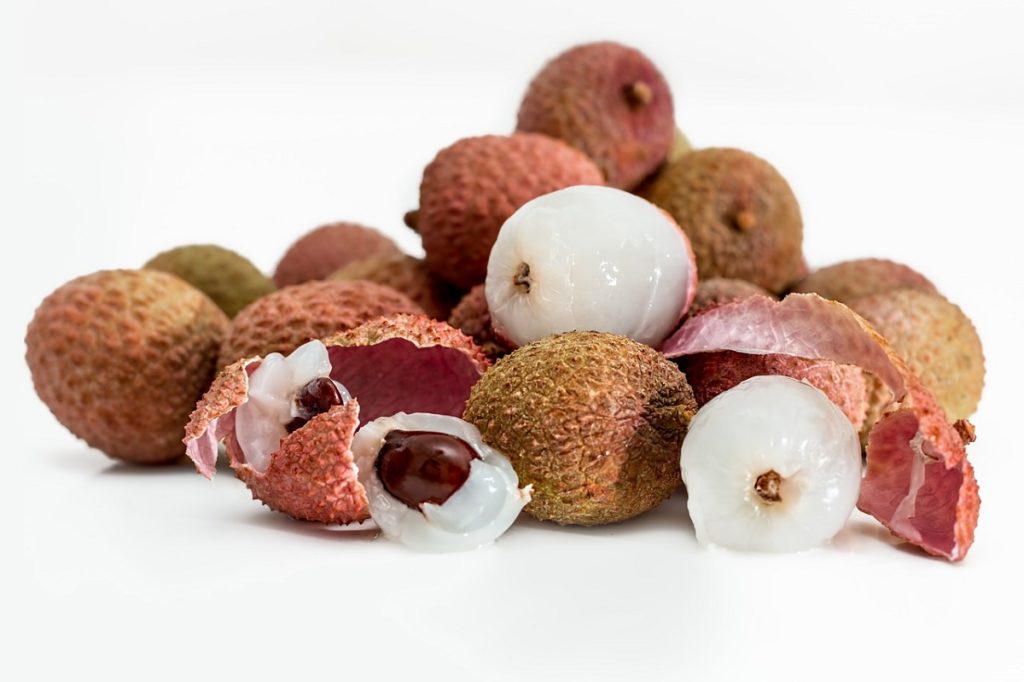
How to peel and eat Lychee?
Holding one fruit in your fingers, pierce the bumpy outer skin with your thumbnail. Peel back the skin like you would peel an orange. Underneath the hard, bumpy skin is tender, white flesh with a sweet strawberry-watermelon flavor. The flesh covers an inedible stone, which is the fruit’s seed.
Raw lychee fruit is a delicious and refreshing snack on its own, but there is so much more you can do with fresh lychee. You can add it to salads, make lychee martinis or add it to boba or bubble tea. Fresh lychee can usually be found in Asian markets. It is the more commonly available fruit in this list of exotic Asian fruits.
8. Tamarind
Tamarind is the fruit pod of a tree native to Asia and northern Africa, and used to cook many traditional dishes. The fruit is tangy and sweet but rarely eaten raw. Tamarind’s “sour-sweet” flavor is akin to lemons, apricots and dates. Tamarind chutney, a sweet & sour condiment made with tamarind, salt, jaggery and a sprinkling of special masalas is a must when you are making Indian street food or chaat.
The tamarind pulp is also used in traditional medicine and as a metal polish. It is used to polish the big brass lamps in Asian temples and homes.
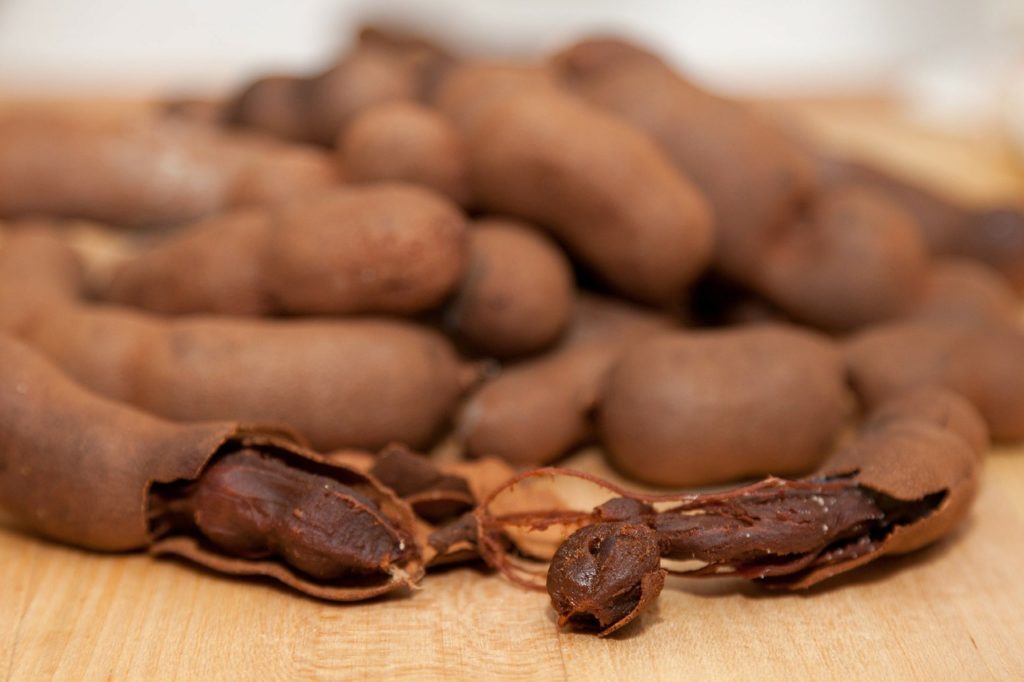
9. Langsat, Langsah or Lotka
This small, translucent, orb-shaped fruit, is pretty sour when unripe, but perfectly sweet when ripe with a taste similar to a pomelo or grapefruit. Cultivated only in a handful of regions in East and South India, they can be found in the hills of Nilgiri (also known as Ooty).
The fiber rich fruit is good for gut health and the Langsat fruit helps in curing digestive tract problems.
What does langsat taste like?
Langsat fruits have a tangy, sour and sweet combination of flavors. It tastes a lot like grapes but some people find its tastes similar to pomelo. Its aril is juicy and translucent when ripe. Once ripe, the taste of langsat is refreshing and exotic.
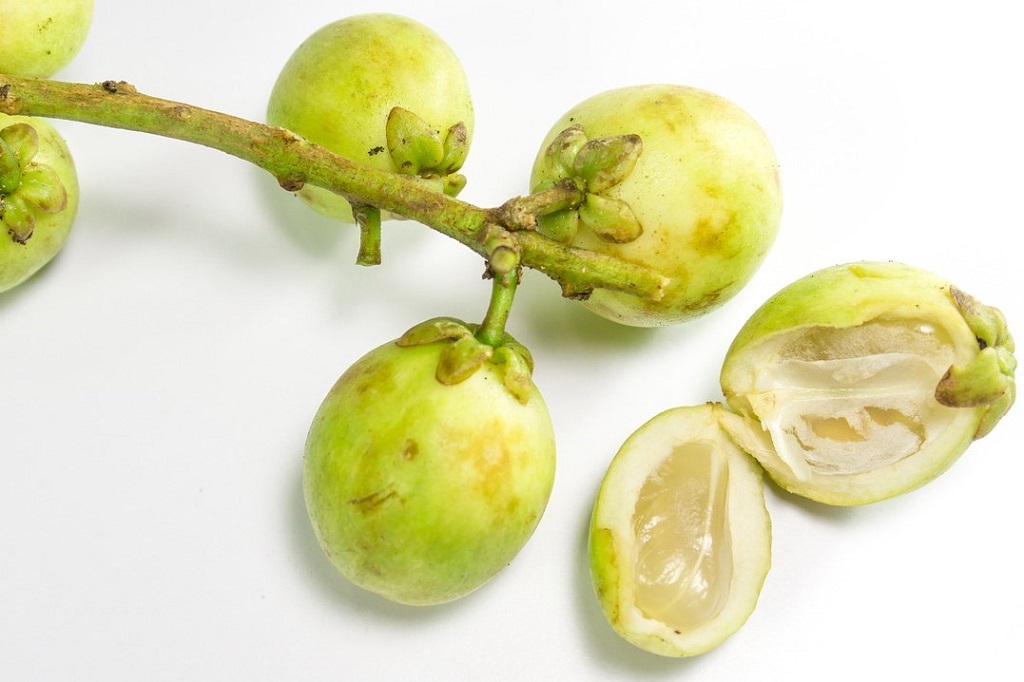
Now that we saw a few exotic Indian fruits, let’s move on to a few more of Asia’s most amazing, mouthwatering, and exotic fruits. Ranging from sour to sweet, floral to downright pungent, these fruits offer flavors that are mind-blowing. Let me know how many you have been lucky enough to try.
10. Longan
Longan, native to both Southeast Asia and China, is also known as “dragon’s eye” due to its black seed, encased within the flesh. Longan’s thin, almost bark-textured skin is easy to break by squeezing. You can pop out the translucent ball of juicy flesh easily. This simple looking Asian fruit packs a punch.
The fruit is similar to a rambutan and lychee. Its flesh is both sweet and sour, like a grape, but sweeter than lychee. It has a musky aroma and is used in desserts like sorbets and smoothies.
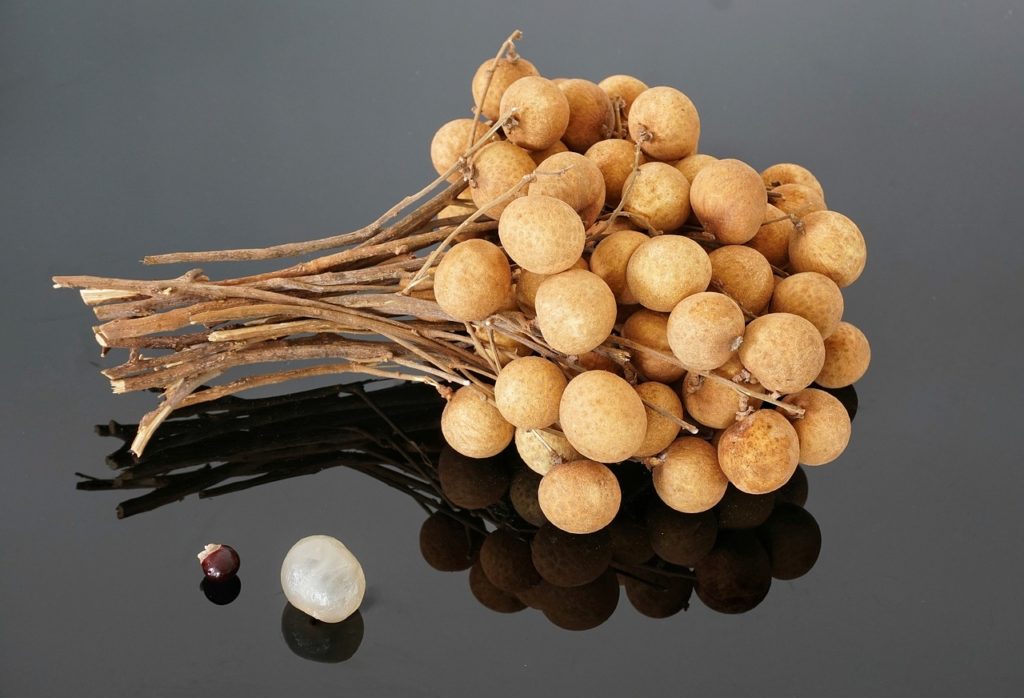
11. Rambutan
Rambutan gets its name from the Malay word for hair because the golf-ball-sized fruit has a hairy red and green shell. Its looks almost like a sea urchin. It grows in a tree that can reach up to 80 feet in height and thrives best in tropical climates, such as in Malaysia and Indonesia.
Surprisingly, I had these for the first time in Zanzibar. Rambutan tastes a lot like lychee. It has translucent white flesh and contains a seed in its middle.
How do you eat a rambutan?
The spiky rambutans taste similar to that of the lychee fruit, but slightly more tart. They are usually eaten plain as a snack. Like Lychees, Rambutan is also delicious muddled into cocktails, paired with other fruits in a tropical salad or as a fruit topping on ice cream, yogurt, or other desserts. You can also use rambutans as a substitute in any recipe that calls for lychees.
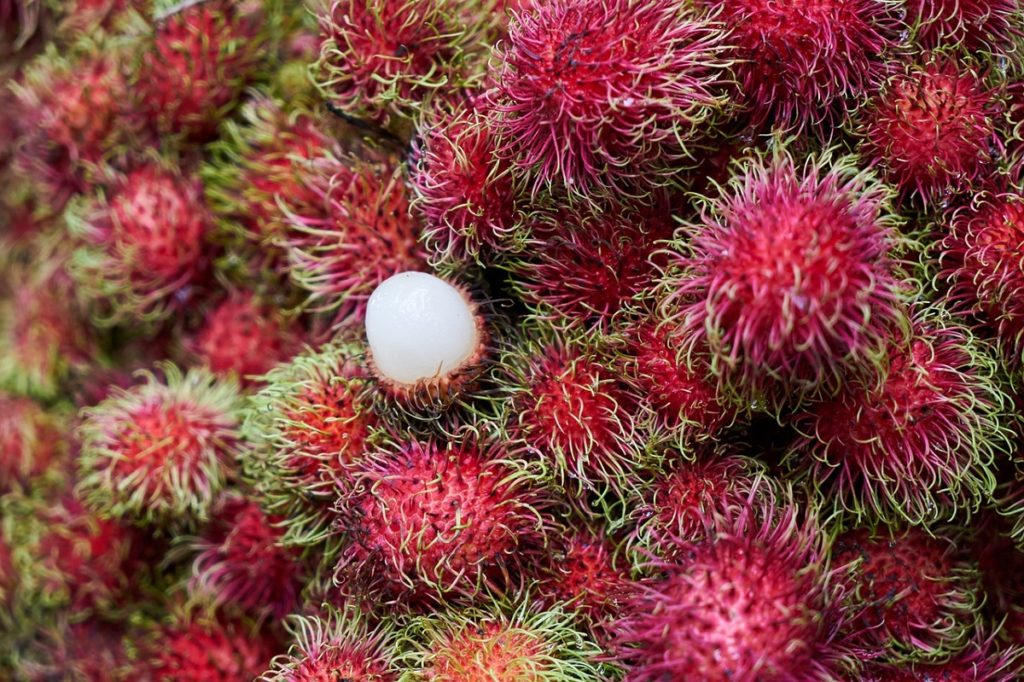
12. Pulasan
A close relative of the rambutan, people often confuse the two. But pulasan has thick, leathery skin, with short, blunt spikes covering all of its skin. Once peeled, inside the skin tightly sits a white-yellow orb of delicious flesh.
Fleshy and creamy, pulasan’s flesh has the same sweet and sour taste as a grape or rambutan, but it is slightly sweeter than a rambutan. I have never actually seen them in Asian stores in the US and can’t wait to try them.
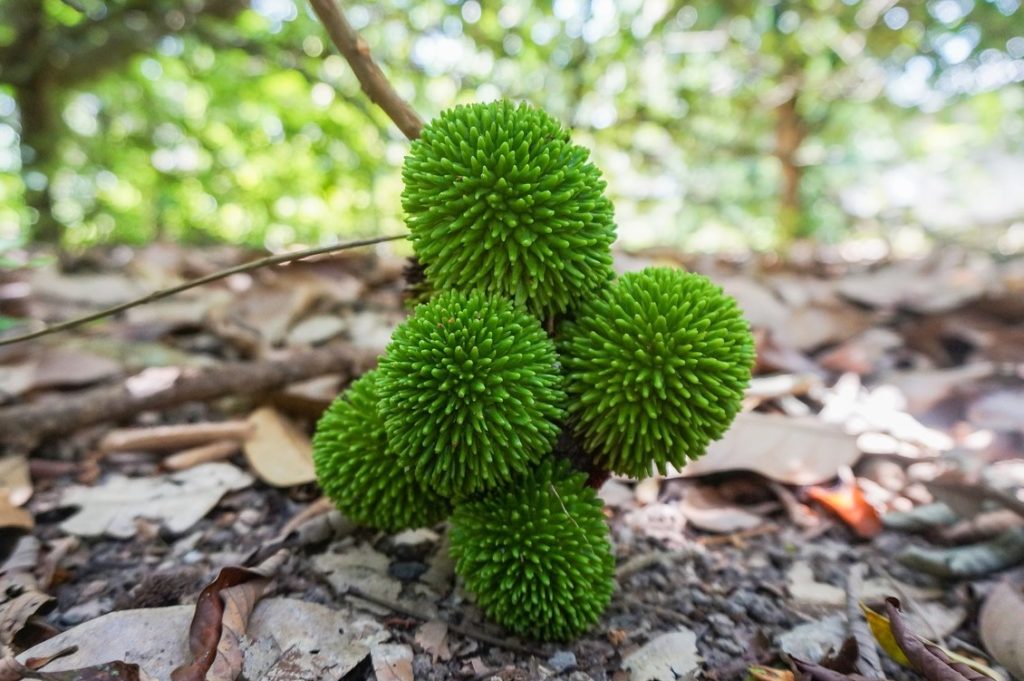
13. Mangosteen
This tropical fruit is fragrant and the tough leathery purplish-red shell surrounds a moist, white and sweet fleshy interior. The flavor of the fruit is mellow and earthy and is similar to mango in taste. Mangosteen is the national fruit of Thailand and is called the “Queen of Fruits.”
Legend has it that Queen Victoria offered a reward of 100 English Pounds and promised Knighthood to anyone who could deliver her a few perfectly fresh mangosteen 🙂
Mangosteen tastes very sweet, almost like a cross between a peach and pineapple and its texture is soft and juicy, like lychee. Mangosteen is popular in jams and desserts across countries like Vietnam, Thailand, and Indonesia. They can also be found in some Southern parts of India.
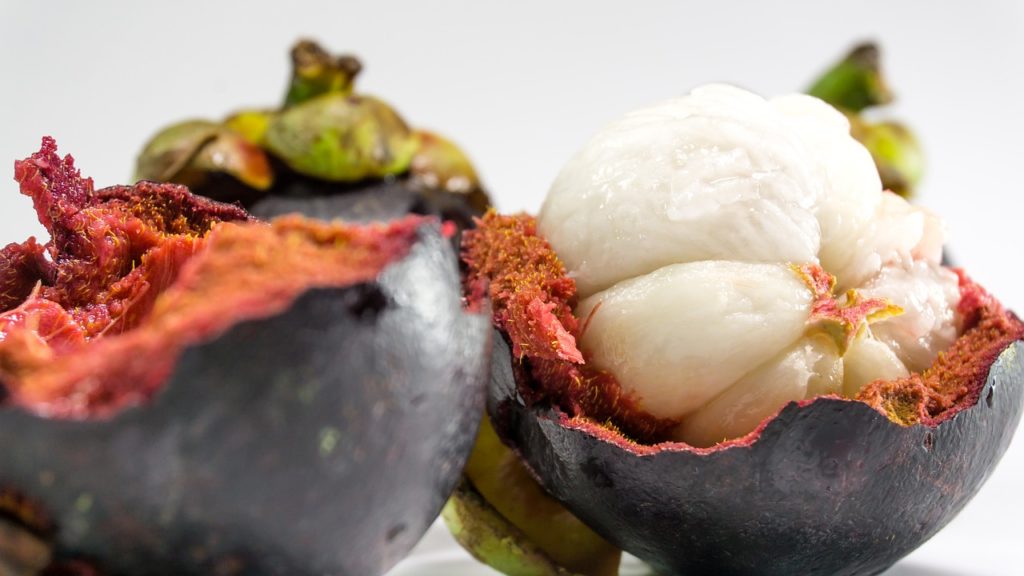
How to open or cut mangosteen?
To open your mangosteen, remove the stem, roll gently and gently press. This creates a crack in the middle of the fruit. Now you can break it open. Or hold it firmly on its side and make a cut with a serrated knife. Cut shallowly all around the circumference, about 1/4 to 1/3 inch deep, just enough to create an opening for your fingers to get in. Open to get to the juicy lobes. Careful not to get the purple color on your clothes!
14. Ice Apple or Sugar Palm fruit
With a stiff brown exterior and a jelly-like interior, the Taal fruit is a cooling treat in the summer season of India. The flesh of this fruit is similar to the lychee in texture but the taste is similar to fresh coconut. It provides a perfect balance of minerals and sugar for the body, especially during the hot summer season.
Ice apple is also called Nungu, Targola/ Taal. The fruit is used to make the Indian alcoholic beverage, toddy, and grown in Tamil Nadu, Andhra Pradesh, Maharashtra, Goa and Kerala. It can be found in parts of Thailand.
15. Pitaya or Dragon Fruit
Also known as pitaya or pitahaya, dragon fruit is a beautiful and unusual fruit grown in Southeast Asia, Mexico, Central and South America, and Israel. Since the spikes resemble a dragon’s scales, the fruit is often called dragon fruit. Pitaya’s skin can’t be eaten, but the flesh can. Pitaya fruit is actually from a type of cactus.
Pitaya’s texture is similar to a kiwi because of its black, crunchy seeds. The flesh, which is eaten raw, is mildly sweet and low in calories. The seeds have a nutty taste and are rich in lipids. Dragonfruit can also be eaten chilled, frozen, juiced, or blended into beverages and smoothies.
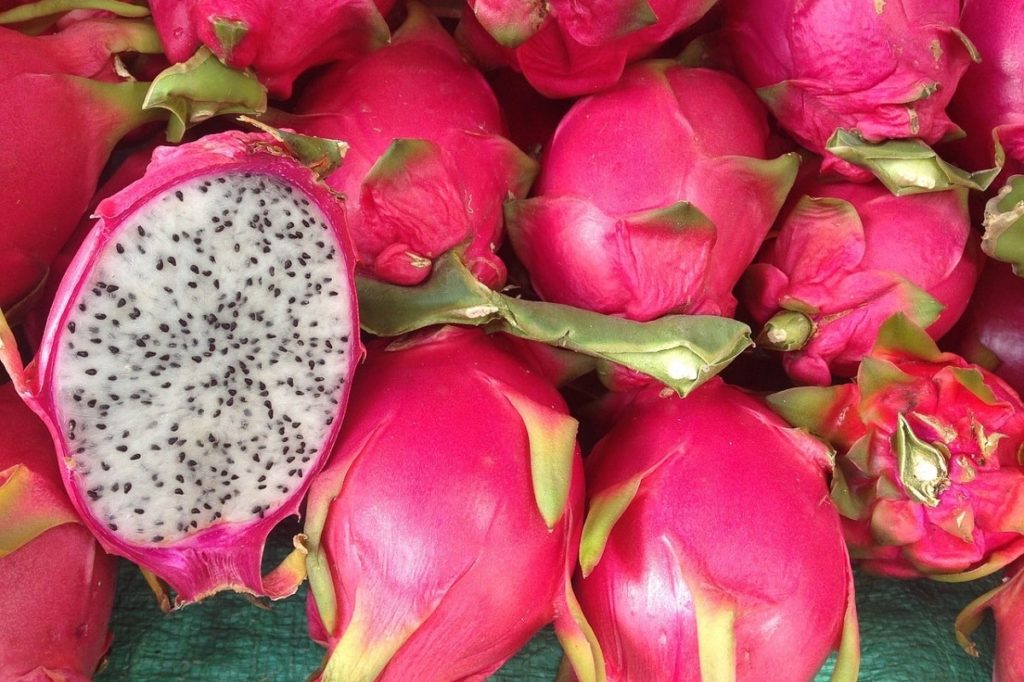
How to Cut and Eat Dragon Fruit?
Dragon fruit is easy to cut, just slice it in and scoop out the flesh which is soft and juicy. A Mellon scoop can be used to do this. You will often see it at Asian food markets and as toppings on smoothie bowls.
There are 3 different varieties of Dragon Fruit: Red pitaya has both bright, pink-red colored skin and flesh, with green-tipped soft spikes covering the skin. Which is more common, you can also find two other types of pitaya in Asia. White pitaya has red skin and white flesh, while yellow pitaya has yellow skin and white flesh.
16. Pomelo
Native to Asia, specifically Malaysia, Thailand, and southern China, and Fiji, pomelo looks like a large, oversized grapefruit (reaching 6-10″ in diameter). It tastes a little bit sweeter and milder than a grapefruit.
Like other citrus family members, it’s high in Vitamin C and has a thick outside rind that you peel off. Pomelo fruit peels apart in wedges like oranges, but each wedge is bigger.
How to peel a Pomelo?
Peeling a pomelo is labor-intensive. You need to get to the fruit beneath the thick white pith. You can buy it peeled to save yourself the effort. Many grocery stores sell this Asian citrus fruit perfectly-peeled and in individual slices.
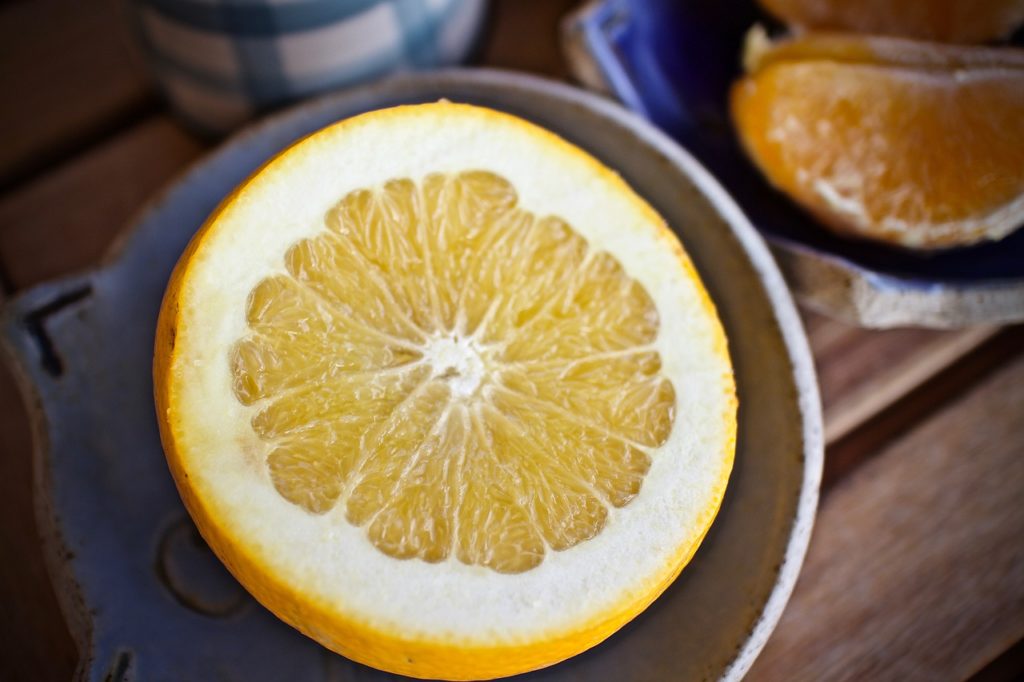
17. Kumquat
Kumquats don’t taste like oranges and have a unique flavor of their own. The juice is quite sour, while the skin is sweet when fully ripe. They belong to the citrus family and are native of China, but also grown in Japan and the United States. You can find kumquats in Asian markets, a few farmer’s markets, and organic grocery stores, from November to January.
How do you eat a Kumquat?
Kumquats are best eaten whole – yes, you eat the peel of Kumquats. Their sweet flavor actually comes from the peel, while their juice is tart. If you don’t like the tart juice, squeeze it out before eating the fruit.
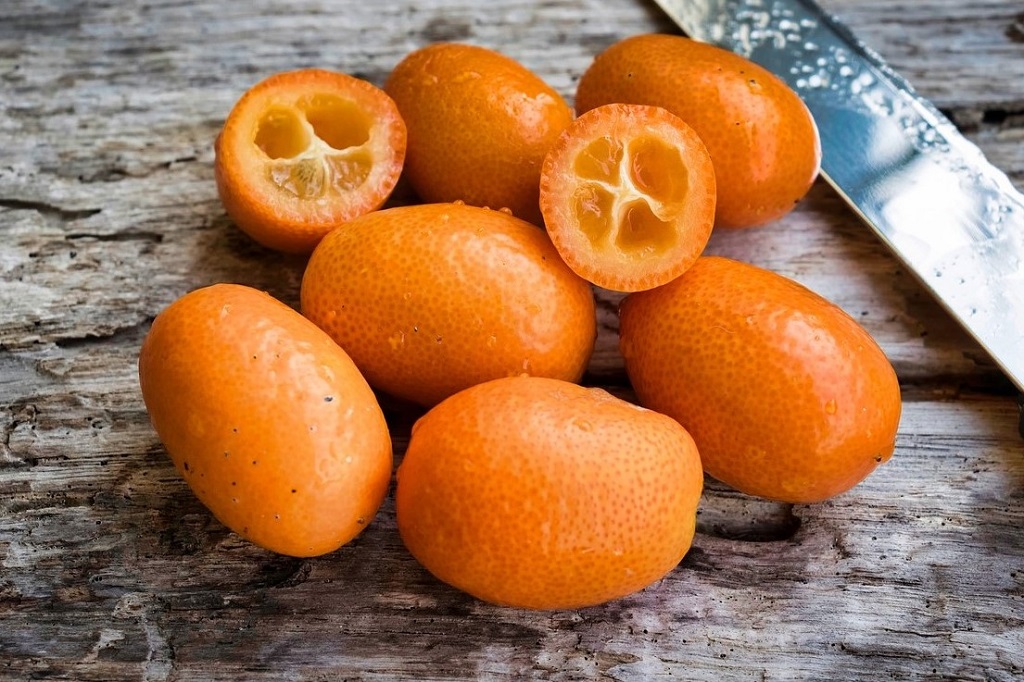
18. Yuzu
About the size of a tangerine, yuzu is mainly found in Japan, Korea, and China. It’s incredibly fragrant, but also super sour and tart. It can’s be eaten as is, instead, its zest and juice are used for flavoring and dressings. It is often used in Japanese food.
Yuzu looks like a deformed lemon or small orange. Just like lemon or lime juice, this funny-looking, hard-to-find Asian citrus fruit adds acidity and freshness. Look for this exotic citrus when you visit Asia. I have never seen a whole fruit but enjoyed a yuzu pudding for dessert (served in the rind) as part of a lovely Kaiseki meal in Kyoto.
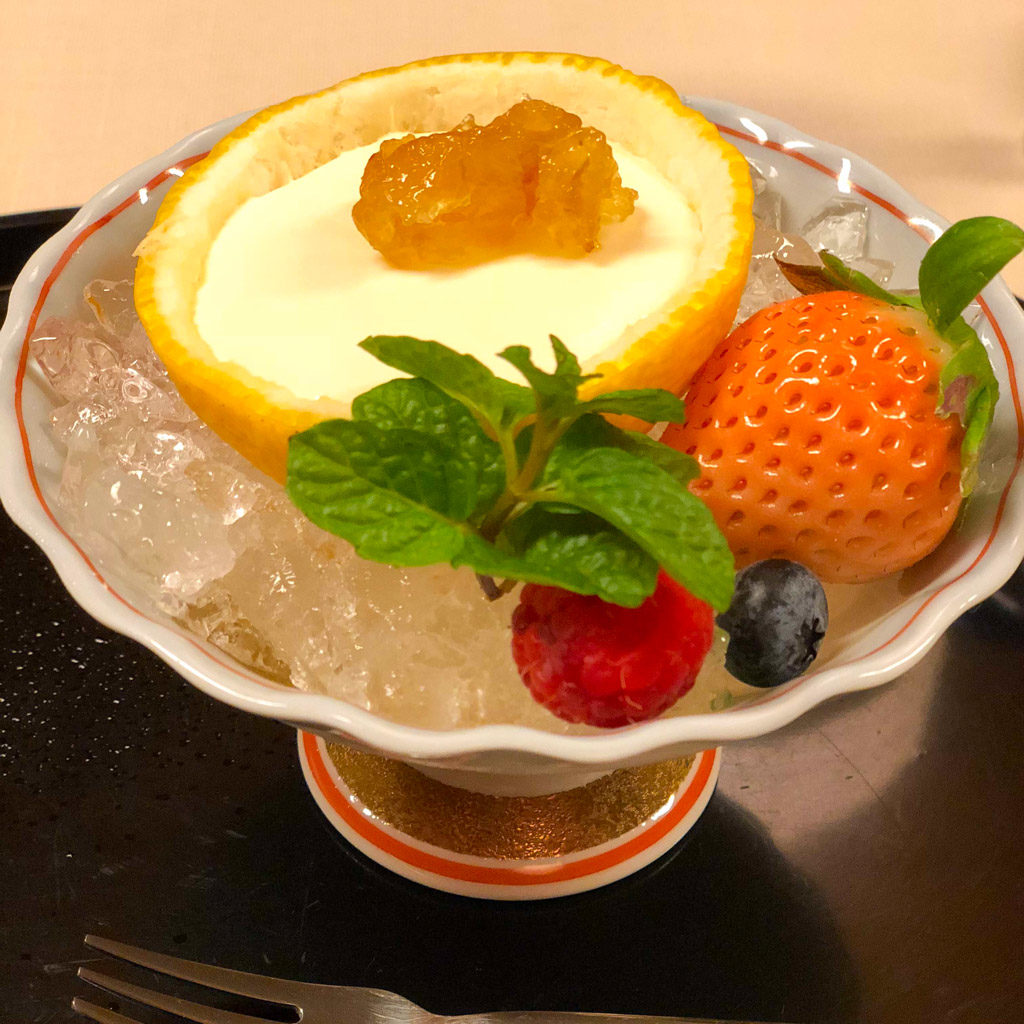
19. Asian Pear
For many centuries in Asia, these crisp pears were reserved for the nobility and wealthy. Now Asian pears (sometimes called apple pears) are the most popular fruit in all of Asia. Asian pears are often featured in gourmet fruit baskets and given as hostess gifts.
What is the difference between an Asian pear and a regular pear?
Asian pears are considerably different from the old, hard, European varieties like Keiffer and Seckel. Asian pears have a distinct but pear-like taste and a crisp texture, much like a good apple.
Asian pears keep in the refrigerator for a month or more. Another reason why these Asian fruits make for great gifts. Once you try them, you will agree that this is a refreshing, unique, and delicious fruit.
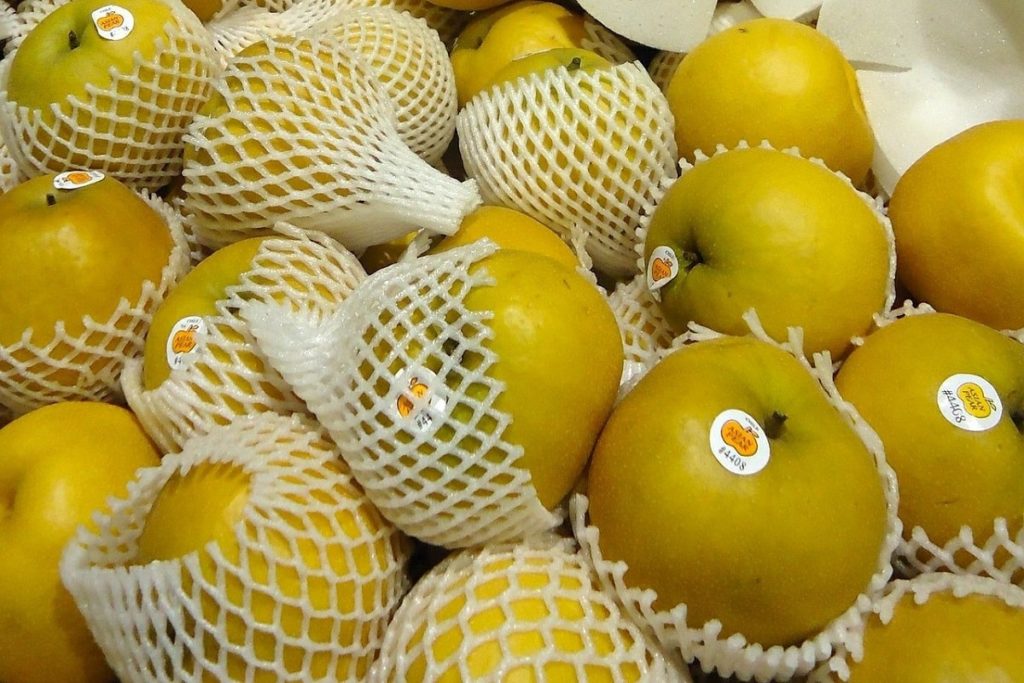
20. Persimmon
Historically referenced as the “Divine Fruit,” and native to China, where it has been cultivated for thousands of years, Persimmon fruit is technically a large berry that grows on trees.
The fruit is rich vitamin A, and vitamin C and loaded with manganese, which helps in maintaining healthy mucous membranes and skin, and protects against lung and mouth cancers.
The most widely cultivated Persimmon variety is Hachiya and oval in shape while the Jiro Fuyu Persimmon looks like a tomato. Both can be eaten fresh, dried or cooked. Fuyu is less astringent than Hachiya.
What does Persimmon taste like?
Persimmon fruit’s skin color ranges from yellow-orange to dark red-orange, and it is sweet and high in glucose content. Persimmon when ripe are a deep orange-red-color and have a honey like taste. Peel the skin to enjoy the sweet flesh. These Asian fruits are usually available in October and November and look great in holiday salads.
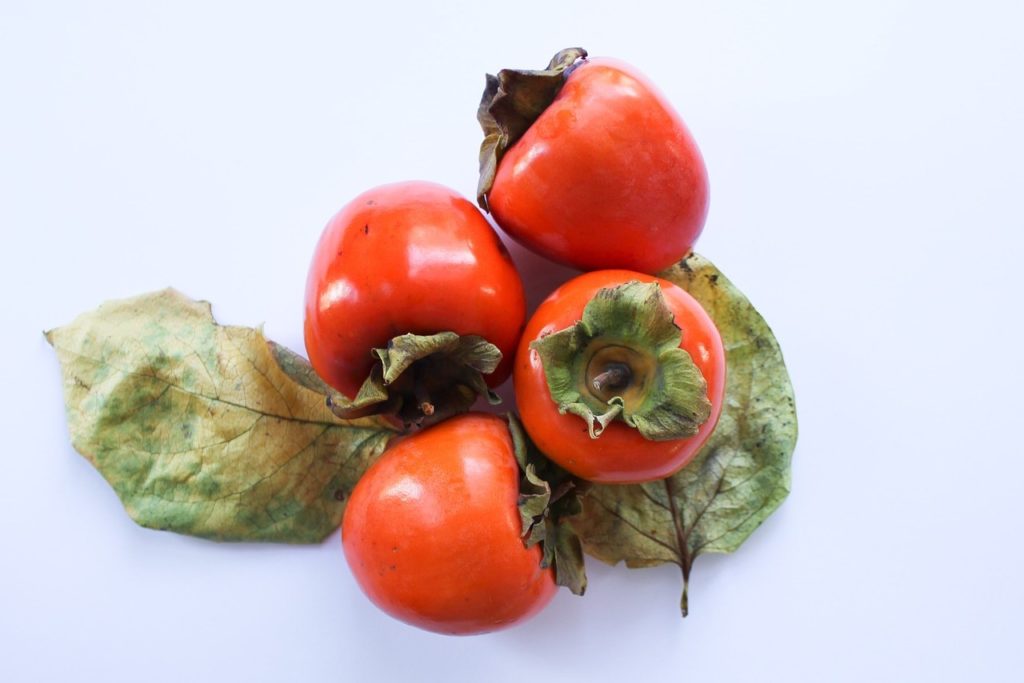
21. Goji Berries
The goji berry, also called the wolfberry, is a bright orange-red berry that comes from a shrub and is considered a superfood and fountain of youth. It is native to China. Goji berries are eaten raw, cooked, or dried (like raisins) and are used in herbal teas, juices, wines, and medicines.
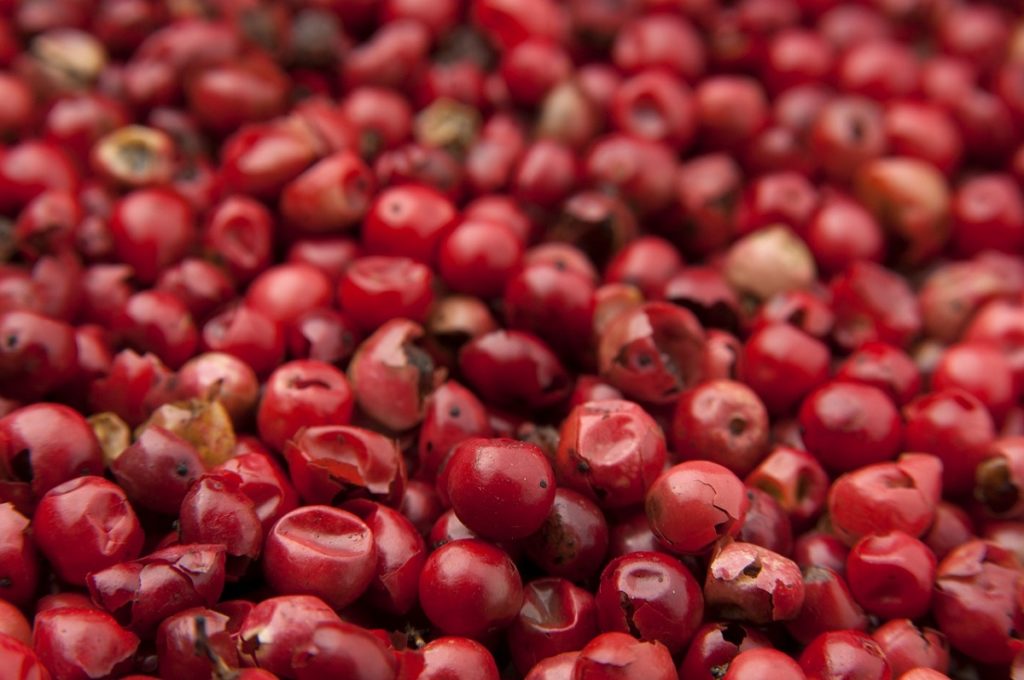
Benefits of Goji Berry
Goji berries are rich in nutrients. Some studies using goji berry juice found possible benefits that included:
A feeling of well-being and calmness
Better sleep
Weight loss
Promotes healthy skin
Stabilizes blood sugar
And a boost to your immune system
In Asia, goji berries have been eaten for generations in the hope of living longer. This is why you should add it to your morning smoothie bowl!
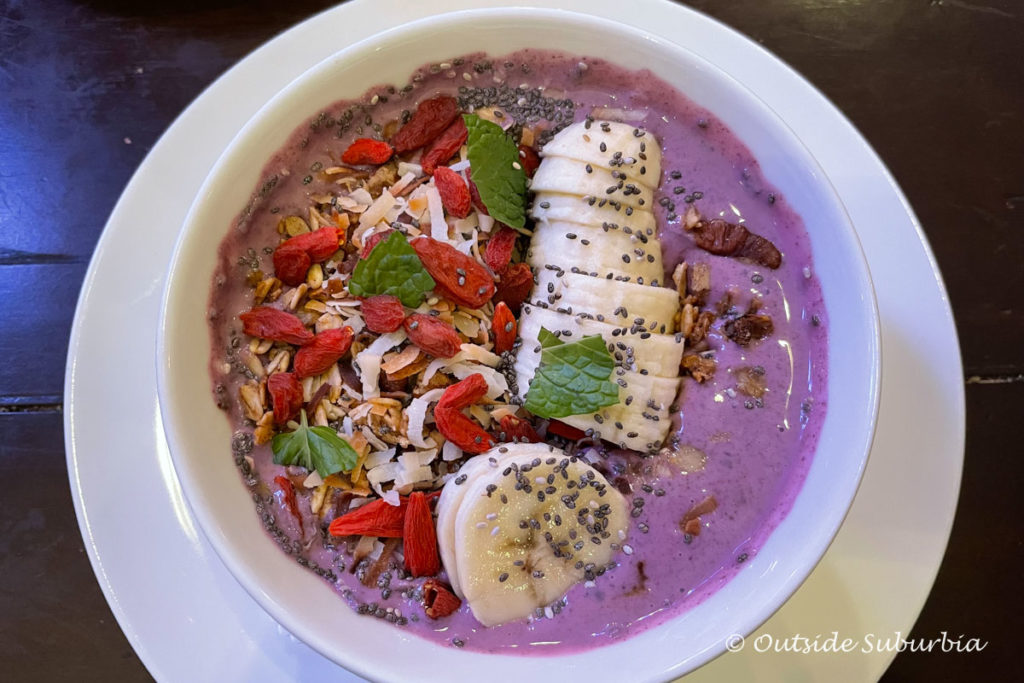
22. Passion Fruit or Maracuja
You might see this unique fruit as an offering in breakfast buffets at your hotel in Asia. One of the most well-known tropical Asian fruits, the passion fruit has a sharp and explosive taste.
Its tough, crispy purple skin needs to be peeled, in order to get to the fleshy deep yellow pulp, dotted with black seeds. Eaten raw, the pulp has a rather acidic taste. Each bite gives you a soft, fleshy bite and a little crunch from the seeds.
How to eat passion fruit?
Slice the passion fruit in half and use a small spoon to scoop the pulp into a small bowl. You can gently heat it to liquefy it a bit. This will make it much easier to strain. Now you can strain the warmed pulp through a fine sieve to remove the seeds. Passion fruit pulp makes a great addition to smoothies, juices, and desserts.
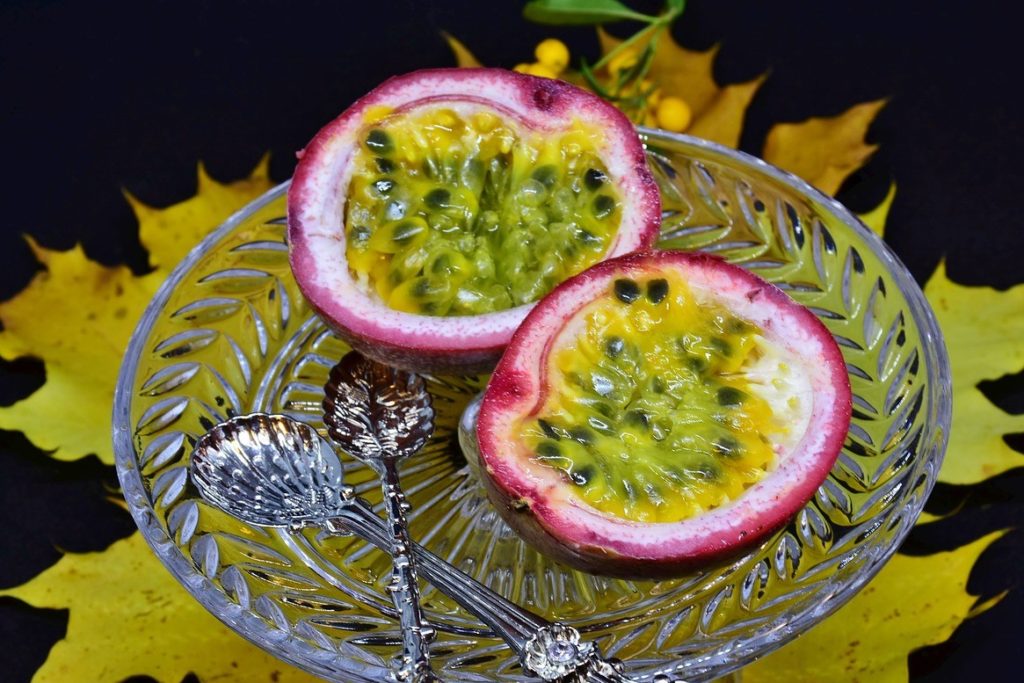
23. Noni
Noni fruit, popularly known as Indian Mulberry, grows on a shrub that is native to Southeast & Southern Asia and the Pacific Islands of Tahiti and Polynesia.
Like durian, this is another exotic Asian fruit that puts people off. It is bright green, lumpy and almost wart-like exterior and has a potent aroma (which some describe as similar to blue cheese). Noni has a savory taste that many struggle to handle.
Noni has a bitter and sour lingering taste, with just a hint of sweetness. Some even refer to it as “vomit fruit“, due to its taste and texture. To be honest, this is one Asian fruit that I’m not too eager to try! I gag easy!!
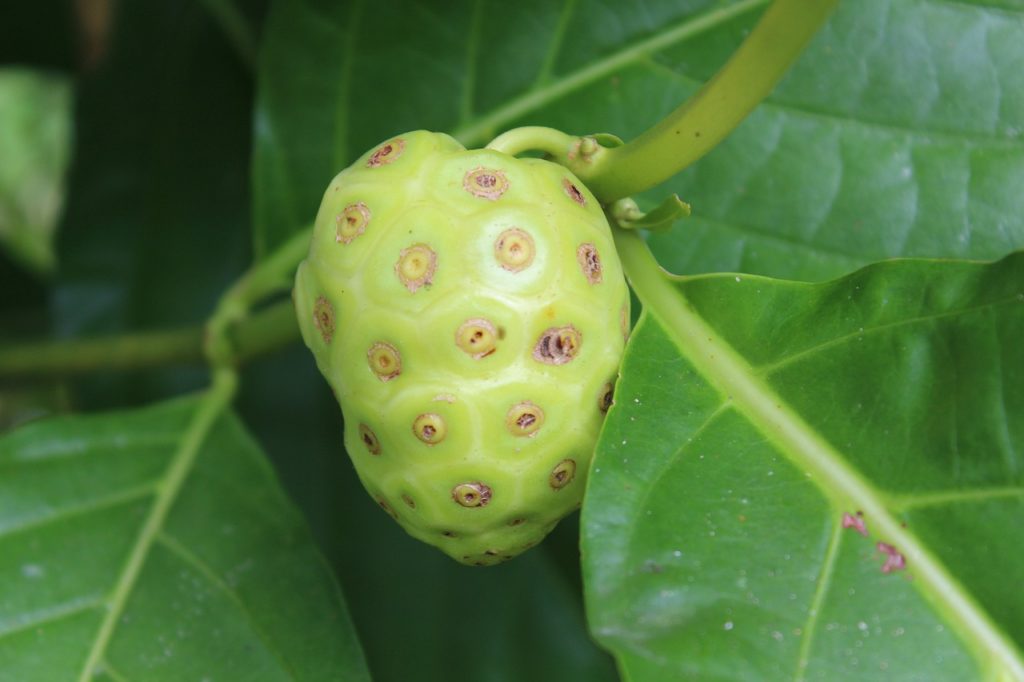
24. Corossol fruit, Soursop or Graviola
Soursop is a little-known oval Asian fruit, popular in both Asia and the Caribbean. Also called corossol fruit, graviola, or custard apple, soursop comes from a tree, Anona muricata, native to African and South American forests. The fruit has external spikes and is large, usually weighs several pounds. Its flesh is white, juicy and filled with abundant dark seeds.
Soursop is from the same family that sugar-apple belongs to and common names include guanábana (Spanish) from which guyabano, its common name in the Philippines is derived. The Indonesian name is sirsak. It is not readily available in the US.
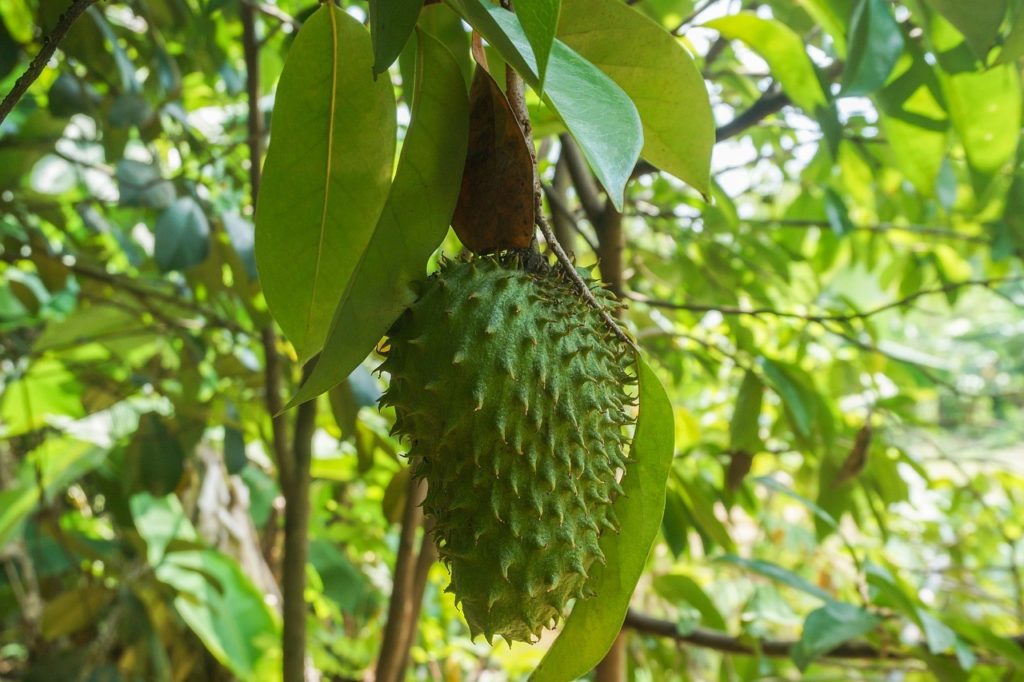
What does soursop/corossol/guanábana fruit taste like?
Its taste is often described as a combination of strawberry and pineapple, but with a little citrus mixed in. It’s most commonly found in the Caribbean, South American, and Southeast Asian cuisines, where it’s used as an ingredient in beverages, syrups, ice creams, or sometimes eaten raw.
Soursop is larger than sugar-apple with the seeds arranged down the middle so it is easier to separate them from the flesh. The flesh, of Soursop as its name suggests, tastes more sour than sweet with a creamy mouthfeel. It is good in smoothies.
It is said to improve your ability to defend against pathogens and also promotes the destruction of free radicals, which can help to protect our skin and cells from environmental oxidative damage.
25. Sugar Apple, Sweetsop or Custard Apple
Sugar Apple is the most widely grown member of the Anona family. The unique looking and delicious fruits are highly sought after. The white or yellow flesh has a sweet, dessert-like taste and has a texture similar to a creamy custard. It is known as Sita Palam in South India and has a sweet aroma.
The seeds though are poisonous and so are the leaves and bark and are used as pesticides and insecticides in India.
Native to the West Indies and tropical Americas, sugar-apple was introduced by the Spaniards to Southeast Asia. Popular in Malaysia and Vietnam, behind a sugar apple’s tough, scaled green rind is an utterly delicious segmented sweet and creamy pulp.
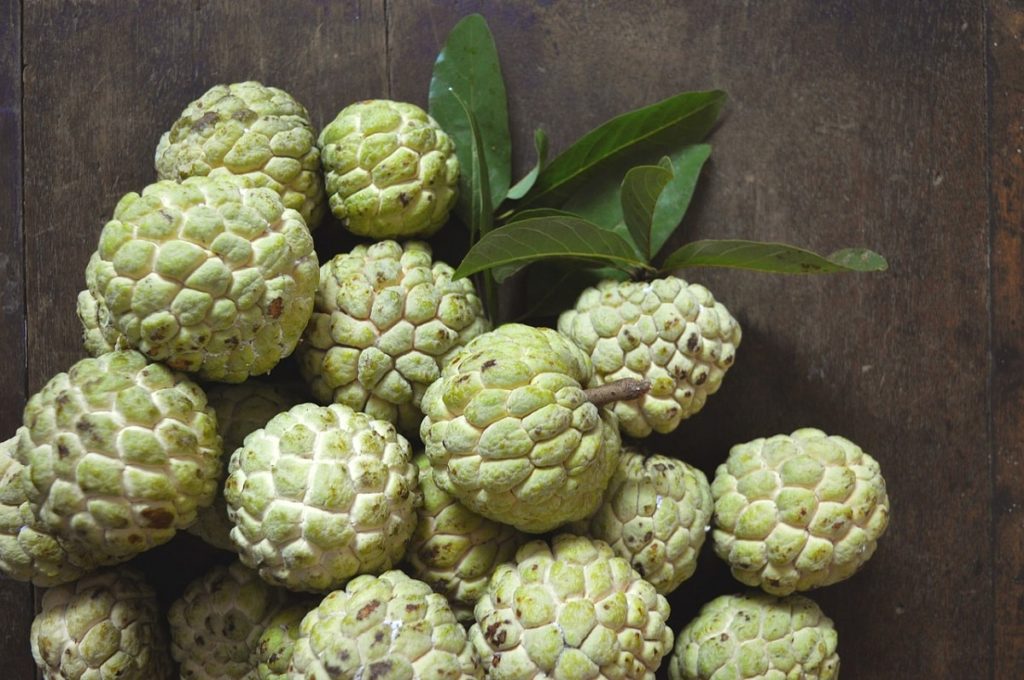
How to eat to a custart apple?
The sweet white flesh of a sugar apple is segmented and arranged in a symmetrical single layer around the core. Most of these segments contain a seed. A single fruit typically contains 20 seeds or more. The mouthfeel of the flesh resembles custard and the flesh of sugar-apple is very slippery.
The best way to eat sugar apple is to pop a segment into the mouth and spit out the seed. Once you master that, you will enjoy this delicious and exotic Asian fruit.
26. Tamarillo
The tamarillo is a unique, egg-shaped fruit, pinkish red in color, and sometimes confused with the common tomato. Tamarillos have an interesting taste. It has a similar consistency to tomato pulp, but it is sweeter. Many describe it is as a cross between a kiwi, passion fruit, and tomato, particularly because you can eat the seeds.
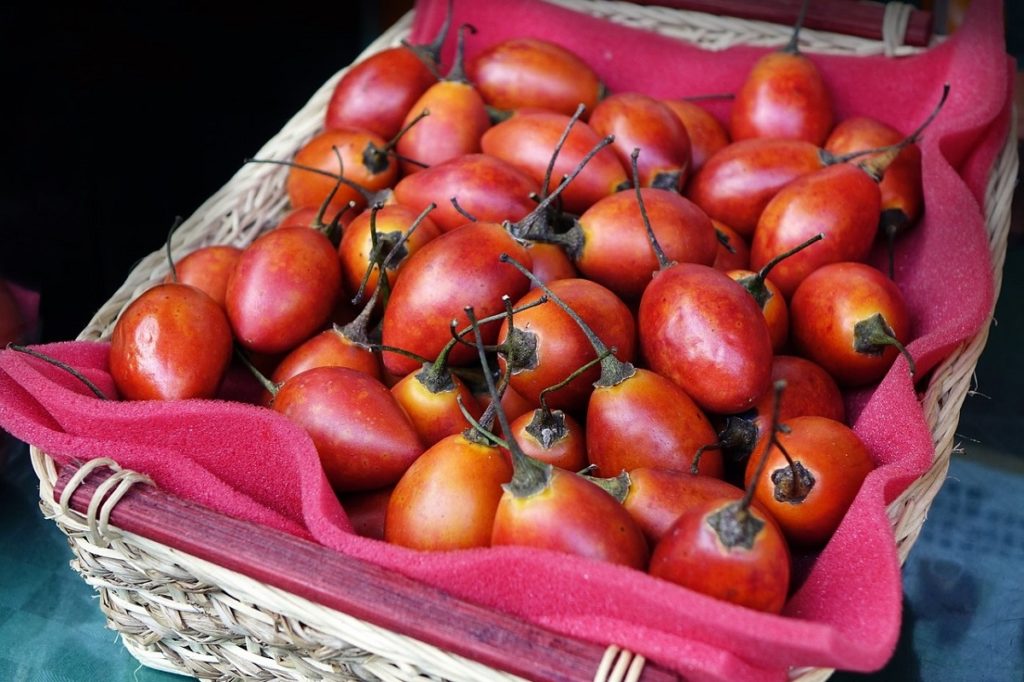
What does a tamarillo taste like?
Tamarillo’s tough and bitter skin is not commonly eaten. Instead, it’s cut or peeled to reveal the blood-red, seed-dotted pulp inside.
The flesh of the tamarillo is tangy and sweet, with a bold and complex flavor, and is often compared to kiwifruit, tomato, guava, or passion fruit. The skin and the flesh near it have a bitter taste and are not usually eaten raw.
27. Wax Jambu or Wax Apple
Shaped like a bell and native to the Malay Peninsula and surrounding islands, wax apples grow on tall trees. It looks like it’s made out of wax, hence its name. These pear-shaped fruits with a puckered bottom, waxy skin have a center seed cushioned by a puffy inner mesh.
It is also referred to as rose apples, water apples, mountain apples, love apples, Java apple, Semarang rose-apple, and wax jambu. There are actually more than 100 varieties of Red Wax Jambu trees.
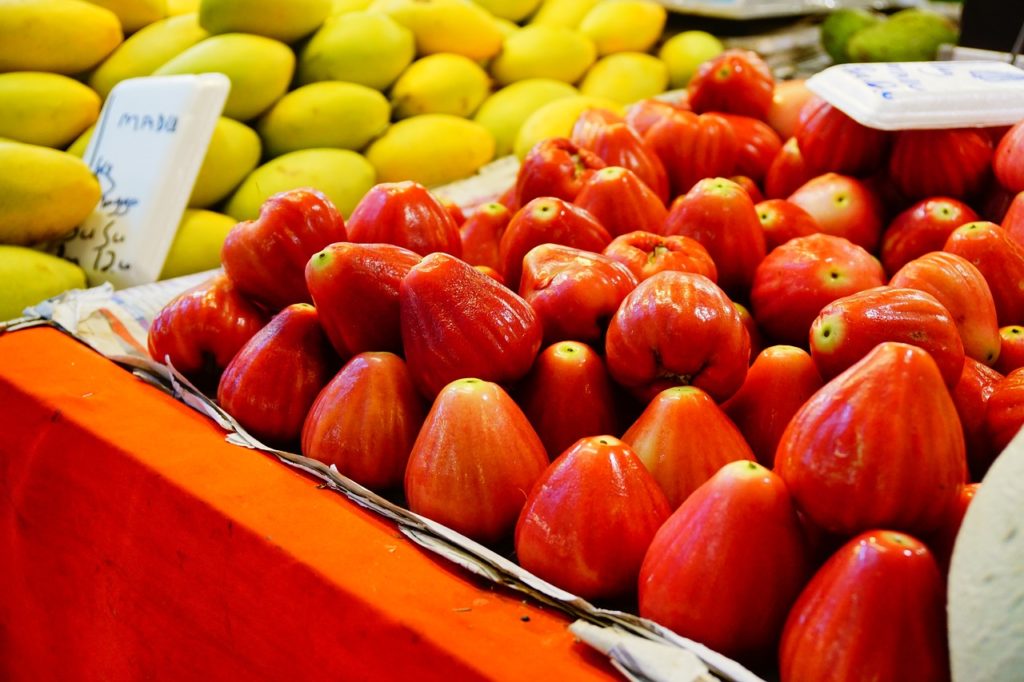
How to eat a wax apple?
You can eat wax apples just like any other garden variety apples or pears. Slice or bite around the core of seeds to enjoy.
Wax apples or Java apples are usually about the height of a medium-sized apple, but skinnier. This Asian fruit is put in salads and is also used to cure diarrhea.
28. Chinese Bayberry or Yangmei
Also known as yangmei or waxberry, Chinese bayberry trees are a common sight in fields and woodlands baking under the hot Chinese summer sun. They are baked, preserved, fermented, pickled or popped whole into mouths. Wash well before you pop one into your mouth, as farmers use fewer pesticides on these trees than with other fruits.
Chinese bayberries have a rich red color and an exquisite taste and are extremely perishable. They are only available for a short period in early summer – which makes this Asian fruit all the more cherished.
What does Chinese bayberry taste like?
Some describe the flavor of the Yangmei or bayberry as falling somewhere between a strawberry, a cranberry and a pomegranate, with the texture of an orange and a pit like a cherry. It’s sweet but not saccharine, tart without puckering your lips.
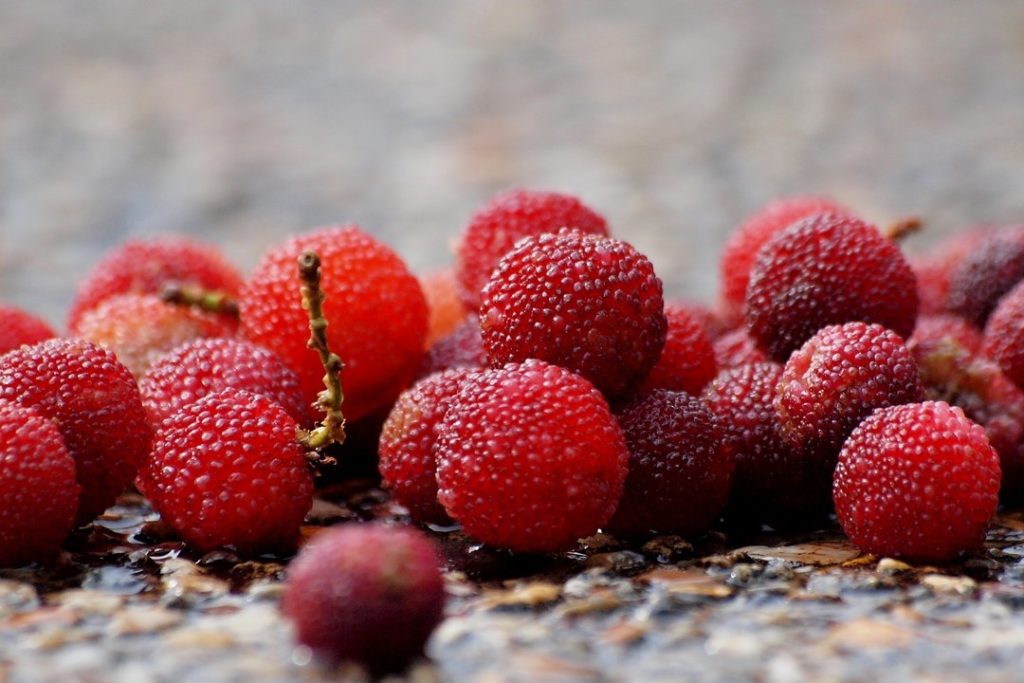
29. Snake Fruit or Salak
Known as salak or salacca zalacca, Snake fruit is native to Indonesia but grown and produced around southeast Asia. It is known as Salak in Malaysia and Indonesia, but its thin, scale-like skin, very similar in appearance to that of a cobra or python, earned it the name, Snake fruit.
Snake fruit is similar in size and shape to a fig, with a bulbous body that tapers to a point at one end. The fruit is encased in shiny, dark to light reddish-brown scales.
How do you eat snake fruit?
Though it is scaly and prickly and may look tough, the skin of snake fruit or salak is actually quite thin and can be easily peeled off by breaking the tip. Underneath the snake-like skin lies three white or light yellow lobes of juicy pulp that look similar to large peeled cloves of garlic, with hard, flat inedible seeds inside.
The complex tropical fruit flavor of Snake fruit is often described as a blend of apple, pineapple, and banana. It has the sweetness of honey with an acidic finish, leaving a citrusy tingle on the tongue.
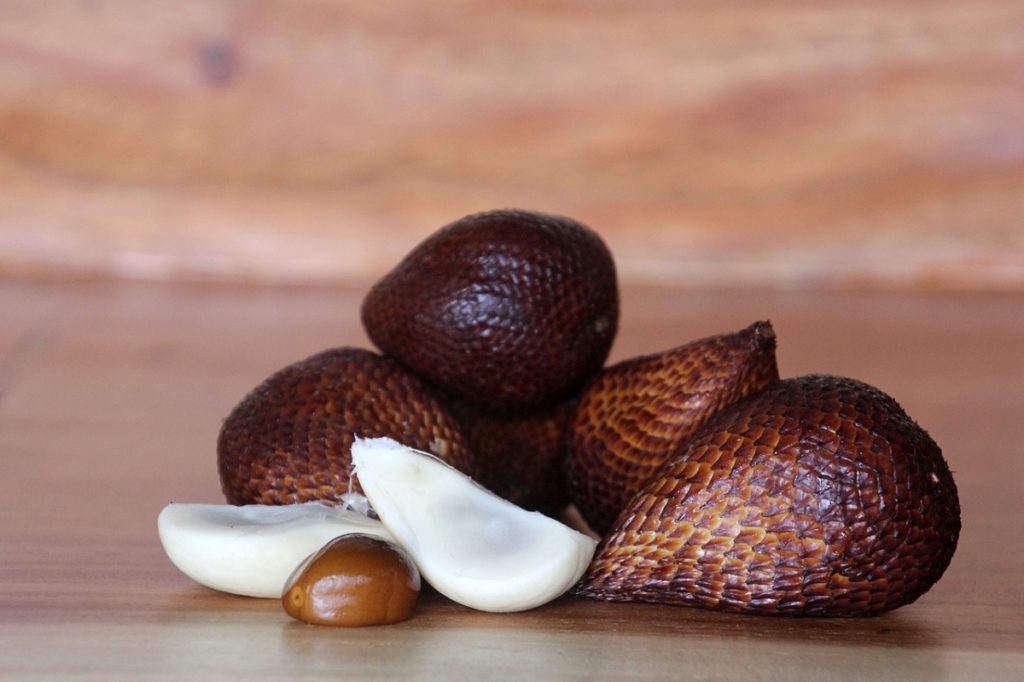
30. Durian
Durian has been grown in Southeast Asia since prehistoric times. It is a unique tropical fruit with a pretty strong pungent smell. Durian is the most controversial of Southeast Asian fruits and is even banned in some places. Especially in public places, such as hotels and bus stations.
Durian is a well known fruit in Southeast Asia, where it’s nicknamed “the king of fruits.” Durian is very high in nutrients, containing more than most other fruits. The husk is spiny and inside are five cells with creamy pulp.
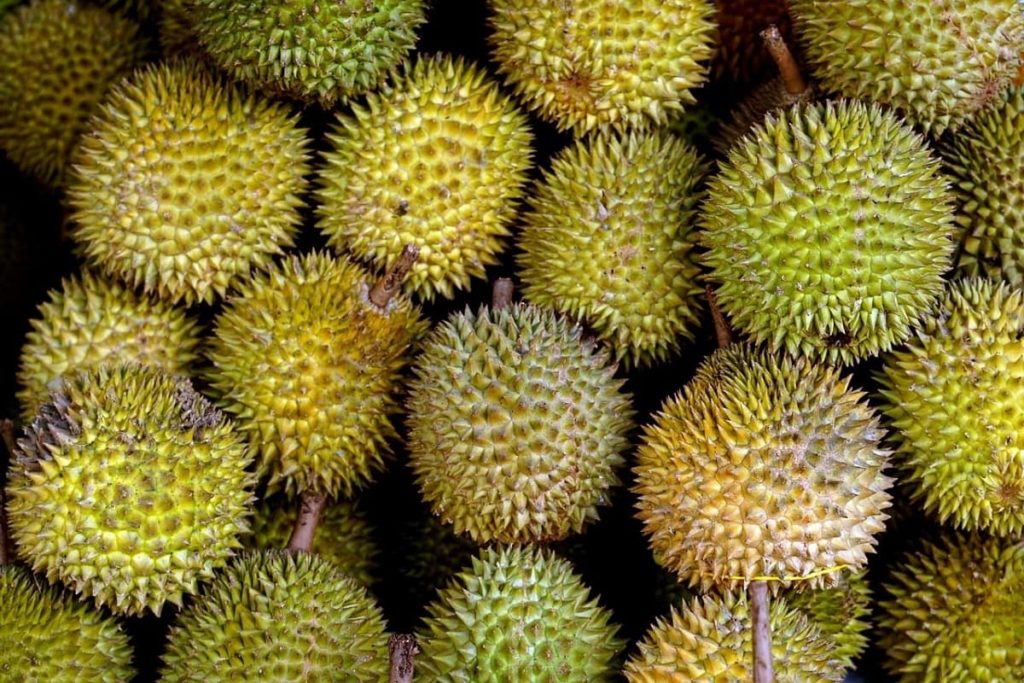
Jackfruit vs. Durian
While the Jackfruit looks like an oversized durian, the biggest difference is that durian has an intense flavor and smell, which is noticeable even while the fruit is still whole. Durian is spiky where jackfruit has a more pebblelike skin.
Durian’s flesh is divided into distinct segments by the thick husk, unlike the tightly packed pods found inside jackfruit. Additionally, durian is generally reserved for sweets and doesn’t have the savory dish potential and versatility of green jackfruit. I will let you decide – Jackfruit vs Durian, which deserves the king of Asian fruits title 🙂
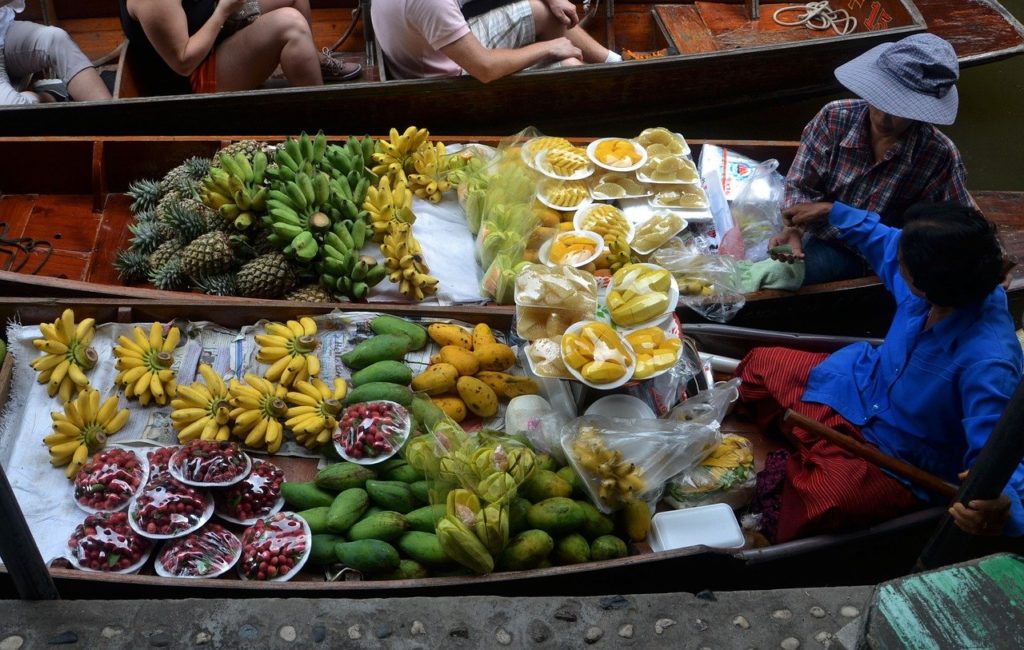
Hopefully, this collection of exotic Asian fruits will inspire you to try some new fruits and flavors when you visit Asia next or expand your taste palette by sampling them when you visit an Asian Grocery store near you.
So tell me… how many of these exotic Asian fruits have you tried? Do you have a favorite? Mine are Jackfruit, Custard Apple and Sapota.
You might also like these other Food Diaries:
11 Portuguese desserts you must try
Best ice cream shops in Plano
French Pastries you will love
Spanish Dishes, Drinks & Desserts
10 Moroccan dishes you must try
20 Iconic Food in Italy you can’t miss
CONNECT WITH US
